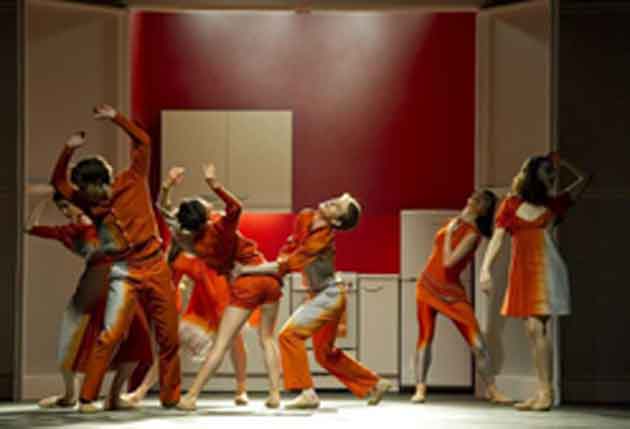The Royal Ballet, Royal Opera House, London
A dim view of humanity

The Royal Ballet's latest programme puts three recent works together, only to find that they make a muted, muffled impression. There's too much dim lighting, too many vague statements of humanity.
As One is 25-year-old Jonathan Watkins's first work for the main stage. A choreographer promoted from within the company, he creates some darting solo dances, showing off the speed and charisma of his cast, but there's a fuzzy naivety to the work as a whole.
Laura Morera opens the work, framed in a gap in the drop curtain. She glances about, quick as a bird, dipping into poses and sweeping back out of them. As the curtain draws back, we see the rest of the cast matching her movements, a solo becoming a group dance. It's the clearest statement of Watkins's theme, which is people in the city, as individuals and groups.
Graham Fitkin's commissioned score is bright and energetic, with a spiky Stravinsky-ish edge, different melodies crossing. Simon Daw's set has curving walls that open to show inner rooms. At a party in a kitchen, the cast break into "real people" dance, then polish it up with classical footwork. The tone is over-eager, but the cast are lively, with Yuhui Choe standing out.
A section called – oh dear – "Urban Youth" has a group of men looking thoroughly, balletically polite while pretending to be teenagers on a street corner. Overhead, Watkins and Daw dangle strings of "shoefiti", laced-together pairs of shoes hanging from telephone wires. They're just set-dressing; actually throwing them might have been fun.
Steven McRae whirls through as a driven businessmen, leaping and spinning as words and numbers scroll past him. Morera and Edward Watson slump in front of the television. Watkins wants to celebrate ordinary people, but he doesn't make them distinctive enough as characters. The best moments display his cast as dancers; too often, he slides into well-meaning but waffly celebrations of people getting along.
Kim Brandstrup's Rushes – Fragments of a Lost Story puts Morera, Carlos Acosta and Alina Cojocaru in the shadows of a 1920s movie set. A love triangle is played, and possibly replayed, in dull grey light. This is a cast of strong personalities, but you wouldn't know it from Brandstrup's ballet.
Like As One, Wayne McGregor's 2008 ballet Infra presents dancers as individuals and part of a crowd, but does so with assurance. Overhead, Julian Opie's video display shows digital figures passing by. On the stage, a duet is echoed until it becomes a crowd scene. McGregor's steps are going somewhere: they have a focus that keeps this dance sharp. He can also slide into sentimentality, with a "silent scream" scene that sets Sarah Lamb against the masses. Infra suffers on this programme, as another ballet with dark lighting, video work and abstract/emotional content. Even so, its drive and momentum make it the strongest work of the evening.
In rep to 4 March (020 7304 4000)
Join our commenting forum
Join thought-provoking conversations, follow other Independent readers and see their replies
Comments